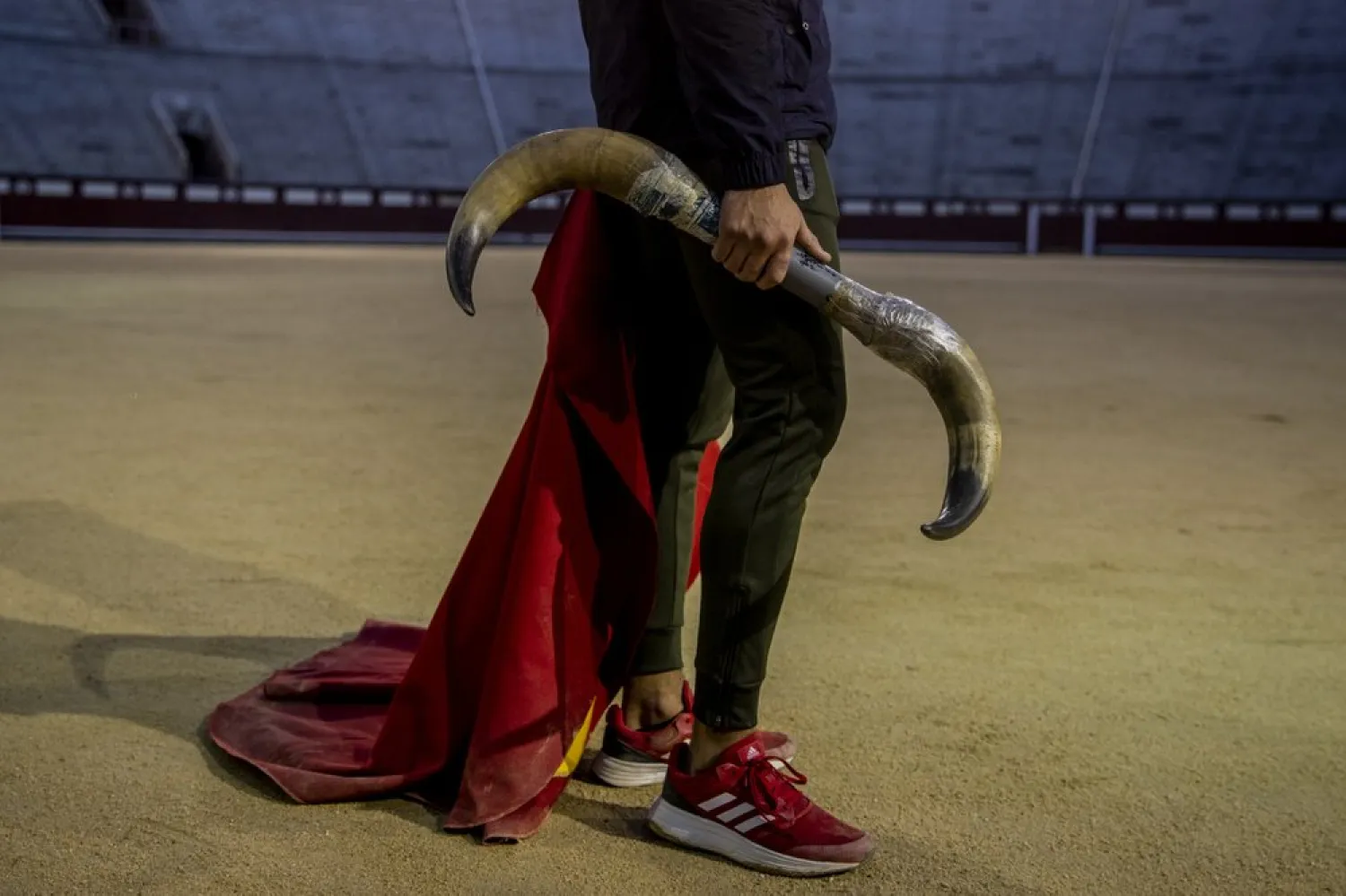Holding the red cape outstretched, one boy practices making an elegant swivel as his fellow pupil slowly sweeps past with a pair of bull horns held in front.
They are students of the Bullfighting School at the Las Ventas bullring in Madrid, where children as young as nine can begin learning this deadly dance of human and beast so closely associated with Spanish identity.
The school was closed from March to August when Spain went into one of the world’s strictest lockdowns to stem the spread of the COVID-19 pandemic.
Bullfighting, whose decline in Spain corresponds with a rise in an interest for animal rights, has barely come back since the lockdown, with the public still not allowed into large outdoor events including professional sporting events.
But teacher Miguel Rodríguez, a former torero, said his school has adapted like the rest of society to the pandemic era. Face masks and hand disinfectant are mandatory inside the school’s indoor workout room. When training outdoors in the sand-covered ring, masks are optional but social distancing is respected.
“Considering that this world was already being hard-hit before (the pandemic), the excitement that the boys have brought back after the lockdown is incredible,” Rodríguez said.
When students arrive for afternoon classes after their regular school, they all address Rodríguez and the other teachers with a deferential “Good afternoon, maestro.”
They exercise in a small gym, running outside for long stretches with and without the cape to build endurance and agility with the equipment. They train in the techniques of facing down the bull with the poise sought by aficionados and the precision that is key to emerging unscathed.
They break into pairs, one acting as the bullfighter, the other as the bull. The boy playing the bull holds two bull horns mounted on a plastic frame they can easily maneuver to mimic the runs the animal takes at the bullfighter. They move as if in slow motion, focusing on learning the smooth movements of a bull pass through a cape.
For Rodríguez, the mission of the school goes beyond the ring. He said it requires pupils to maintain good grades in school and their teachers want them to take away “a series of values: respect, a work ethic, and sacrifice.”
Yet bullfighting has fallen out of favor with a large section of Spanish society, particularly the urban young. Northeastern Catalonia banned bullfighting in 2010, even though a court later overturned the regional law. Other regions have followed suit.
But that has not stopped schools from operating and regions where it is still popular from supporting what many still consider a key part of Spain’s cultural patrimony.
Las Ventas is one of the most prized venues in bullfighting, and a privileged place for its pupils to learn. It is the biggest ring in Spain with a capacity for more than 23,000 spectators and the third largest in the world.
That helps draw students from all over Spain and from as far abroad as France and South America. The school currently has around 70 students, including four girls.
At the age of 14, aspiring matadors can face bulls of up to 2 years old in a bullring without spectators. At age 16, they can turn professional -- if they have the right stuff.
“It is very difficult to become a professional,” Rodríguez said. “You have to be very gifted and work very hard. Of 100 boys, maybe 5 or 6 will become bullfighters. A true great only comes once in a decade.”







